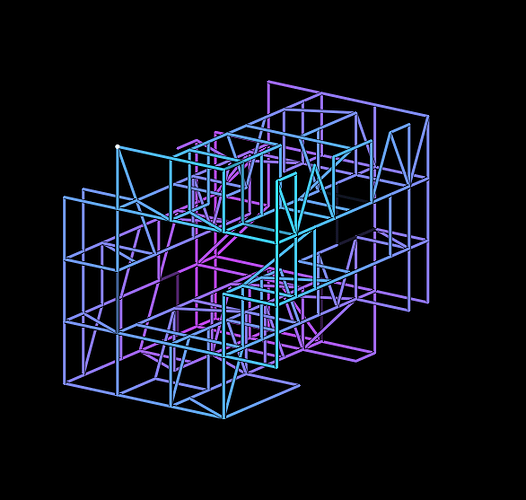![]()
Of course I had to build an Etch-a-Sketch ![]()

Yeah, fBm 1/f time correlated noise was probably not the best thing to start with. There are so many fun and useful things to do with the Tricorder. Even to display a finite Hilbert space of musical states.
There are so many possibilities for future capabilities, such as drawing a 3D point cloud, building a Monte Carlo simulation… Some use cases would require a triggered input sampler.
a short video with 4 different tricorders:
I like the ochd as input for tricorder,
here is the patch:
2023_10_31_Test_Tricorder_rsmus7_01.vcv (21.3 KB)
@rsmus7 that short video needs be longer! I’m looking forward to trying this when I get a chance, amazing work ![]()
Beautiful application!
Seeing that just gave me another idea for an additional user control / CV input. It might be nice to be able to control the plot persistence, fade time, snake length - whatever you want to call it.
I can envision someone taking the time to create recognizable 3D image plots, much like has already been done with traditional 2D scopes.
Thank you, Dave. I added your idea (CV control for the snake length) to the issue I created on GitHub.
Totally. I like to reduce the Etchasketchoscope to frail, broken fragments, it’s nice.
I have tried your wonderful application and I must say that I am delighted. What are your thoughts on the option to adjust the RGB?
I’m open to the idea, but it could be a bit complicated to do well. There are several colors involved in drawing the curve. First there is a gradient applied in the direction perpendicular to the screen between teal and magenta. This was an attempt to show depth. There is another gradient applied to fade the tail of the curve to black.
I don’t know if there is a color-picker control available for us in context menus, or would I have to use three separate sliders for R, G, B?
I will have to ponder this one some more. For now, I have added the idea as Issue 26 on the Sapphire repo.
What if it used the colors of the input cables, the way VCV Fundamental Scope does? Could you use the input cable color applied as the base color for the gradients you’re already using? Would that be easier then building a new system of color controls? It seems likely that it would be cleaner for the module design. The alternative is add a bunch of knobs or sliders, either on the module itself, or on an expander, or in context menus, all of which would attract requests for CV control over those knobs/sliders.
Maybe just start off with a text input that takes a hex colour? You can always change it later once the feature is working.
+1 to @cosmoproductions suggestion of using cable colour
By the way, now that we have your new modules, my Chromagica module, and @isivisi Greenscreen module… it seems like if we can standardise on a colour information interchange format, then we could make some nice interoperation possibilities.
I think someone suggested this before, but I can’t find the thread with it.
My module just uses 0.0 to 1.0 for the R, G and B values, and then the A value is a multiple. However, I found when defining named colours this is quite inconvenient and I ended up with large floats in my presets, eg:
"params": [
{
"value": 1.0,
"id": 0
},
{
"value": 0.52941176470588235294,
"id": 1
},
{
"value": 0.80784313725490196078,
"id": 2
},
{
"value": 0.92156862745098039216,
"id": 3
}
]
So my way might not be the best format, would you be interested?
Wow, that’s cool that there is a module like Copper already. I will play with that. One possibility would be to use two Coppers, one for the “close” color, a second for the “far” color. Then feed both into a hypothetical module like Tin, only larger to allow for a lot more CV input space. The earlier idea about using CV to control orientation and trail length could go here also.
And when I say CV, I mean a control group consisting of:
- large knob
- CV input
- small attenuverter knob
I could add a tiny amount of stuff to Tin, but I like the idea of keeping it thin and simple. The more ambitious control module for Tricorder will need to be significantly wider.
Also, does your Chromagica module output the same voltage values for RGBA as Copper?


